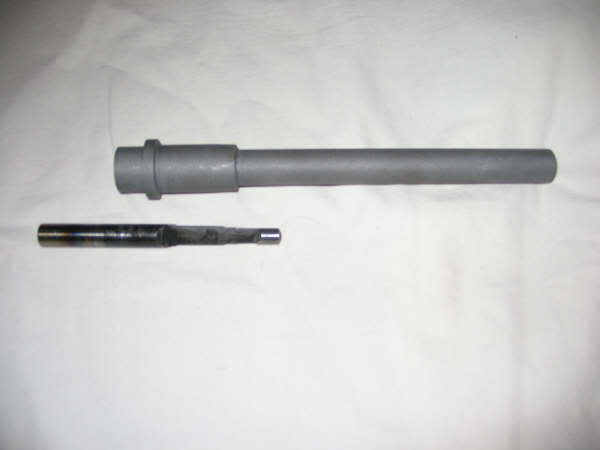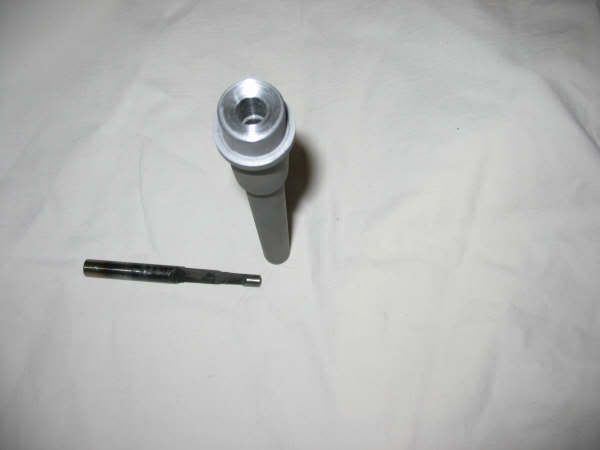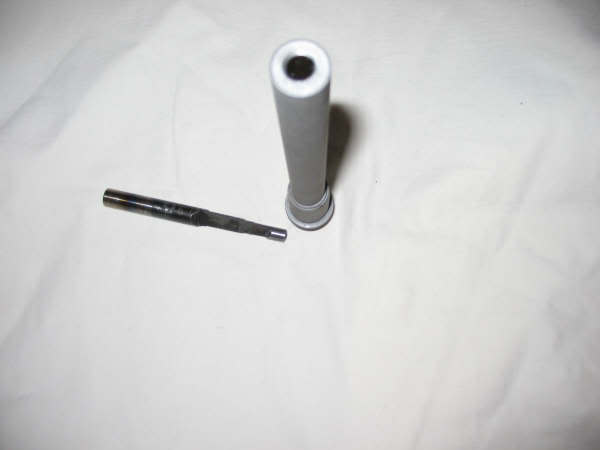-
FREE MEMBER
NO Posting or PM's Allowed

Now, I have a question:
Video: How to Build a Sten MkII or MkV From a Kit
30 min video on how 2 build a Sten Mk2 or MkV from a kit. Does anyone know if this video is on how to build a SAS or a full-auto NO-NO ?
Thanks
J. Savoie
-
01-21-2008 09:02 PM
# ADS
Friends and Sponsors

-
Advisory Panel


Stencollector's point about the carbine being muzzle heavy is well taken. I suppose that an option would be to use aluminum rather than steel tubing to reduce the weight a bit. Even the barrel nut and muzzle cap could be turned from aluminum. If the gun were to be given a Suncorite type coating for finish, it would not be apparent that steel was not used.
J. Savoie - I've never seen that video, but I would bet that it describes construction of a smg, not a legal semi auto.
-
-
-
Other options include fluting the barrel, skeletonizing the bushings, etc.
Союз нерушимый республик свободных Сплотила навеки Великая Русь. Да здравствует созданный волей народов Единый, могучий Советский Союз!
-
-
Advisory Panel


Just use a 1-3/8 frostplug with a hole drilled in the center to allow the barrel through it. On mine, I left the barrel a bit larger behind the frostplug. In the case of your barrel, you could weld the fake tube just at the barrel nut end. I usually drill holes in the tube and weld them shut onto the frostplug to hold it in place, but it could also be brazed or soldered into place. Only problem with the soldering/brazing methods is they will not finish the same as the metal.
I had tried a wooden stock on mine to balance it, but it only made the whole affair heavier. It is not so bad with the loopstock.
For the canvas cover, I actually found a roll of the original webbing/canvas. You can also cut up old P-37 largepacks for the material. I did pick up a large blanket of asbestos to use under the cover, but have not used any for possible health reasons. Firing 5 round magazines in semi auto mode really do not heat up the tube that much.
-
-
Advisory Panel



Originally Posted by
J. Savoie

...30 min video on how 2 build a Sten Mk2 or MkV from a kit. Does anyone know if this video is on how to build a SAS or a full-auto NO-NO ?
If you manage to get a SAS-3 kit, it will come with 6 pages of instruction, along with a BATF approval letter. There really is no need for a video. Some of the instruction has to be taken with a grain of salt. You will not have to weld on the pipe barrel extension provided, as it is not necessary under Cdn laws,nor will it change the status of the gun from restricted to non restricted. I still have the original instructions around here somewhere in case someone needs them, but at this time, if you have the kit, you will have the instructions.
-
-
I was thinking a more aesthetically correct method would be to drill 4 equidistant holes around the tube housing into the barrel nuts and then silver-solder the tube to the nuts and remove any overflow from the seam, then soft-solder some blind dome-head rivets into the holes to help retain the whole affair, like on the originals.
Союз нерушимый республик свободных Сплотила навеки Великая Русь. Да здравствует созданный волей народов Единый, могучий Советский Союз!
-
-
Advisory Panel


Early Mk. II carbines had the barrel seatings sweat soldered (soft solder) and flush rivetted into the casing. Mk. IIIs had the front and back barrel seatings sweated and rivetted with round head drive rivets.
The idea of using a frost plug is excellent. Being pressed from sheet steel, the weight would be minimal.
SOE suppressors used larger diameter tube than the IIS. This results in a very large front end.
If a carbine were registered as non-restricted, a non functional display barrel could be made up for the sake of correct appearance for display purposes.
-
-
-
-
FREE MEMBER
NO Posting or PM's Allowed

You MADE a reamer???
Now i am impressed
Whats it made of and how was it hardened
come on...no secrets!!
-
Fine by me Monsieur Savoie 
Klunk, the reamer is made from drill rod stock, you lathe it to SAAMI specification, in effect a dummy round with a pilot guide on the end, than you mill the flats in a mill to make the cutting surfaces.
To harden, it depends on the steel used. You can either casenit it, or use heat and quench cycles on the heat treat chart for that steel.
They don't last like commercial ones, but work OK for a few barrels, and they pretty much require a lathe to keep them cutting straight.
Ok, wrote the above part early this morning when I was in a rush, here's more detail...
The reamer is made out of drill rod. I forget if it is O-1 or W-1. High carbon steel, hardened then drawn slightly. D reamers are a standard type of reamer, not just chambering reamers. Basically, you turn the steel to the diameter or contour desired, and then cut away almost half. A relief is cut on the rounded side up to the edge to create the cutting edge. The edge is finished by stoning. Biggest problem is the risk of warping when the reamer is hardened. O-1 is less subject to warping than W-1. Plunged straight down into the oil or water, not on an angle or horizontal. Doesn't cut as fast as a multi-flute reamer, but if the edge is in good condition, cuts smooth, as can be seen in the photo. Making these reamers is described in older texts. A reamer to size and finish a drilled hole can be made by taking a rod the correct diameter, and cutting it with a long oblique cut. After hardening, the cut face is stoned smooth.
As I said though, it's not a project for a beginner as there is a high probability of making a mistake and ruining your barrel blank.
Last edited by Claven2; 01-23-2008 at 08:53 AM.
Союз нерушимый республик свободных Сплотила навеки Великая Русь. Да здравствует созданный волей народов Единый, могучий Советский Союз!
-














 Register To Reply
Register To Reply

















